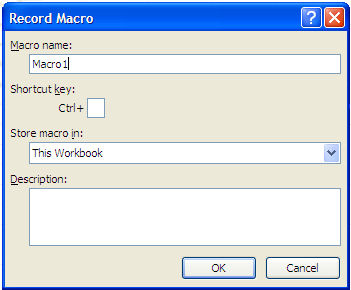

date, integer, multilingual) - the following menu items that are, depending on the situation, available for influencing the table or editing the values in the fields. The popup menu provides - depending on the field type (e.g. By default 2D or 3D window macros ( *.ema) as well as page macros ( *.emp) are generated. The specification of a file extension in the Macro: Name column is only necessary if you want to generate symbol macros ( *.ems) from macro boxes or layout spaces.At a macro box, for example, the values in the Name and Description fields on the Macro box tab are synchronized with the entries in the first line of the Macro definition tab. As soon as you have carried out entries in the first line, these are compared with the values of the properties for the macro name and the macro description. Simple function to apply the Box Tidwell transformation to a vector, when a (single) power is. The values entered in the first line serve to define the first macro.

The text entered here becomes the description text of the macro automatically generated from the macro project and is displayed in a comments field when the macro is inserted.

Macro: Description: Here you store a meaningful text for the macro file.You can use the Insert path variable popup menu item to branch to the dialog Select path variable where you can select one of the available path variables. This name is then used for the file name of the macro to be generated. Macro: Name: Enter the name for the macro, if necessary with path specification, or select it interactively by using.The table contains the following columns: In this table those macros are displayed that are assigned to the respective macro box, the page or the layout space. During automatic generation the same content (same macro box, same page or same layout space) is stored in several macros. If you have entered macro names in several lines in this tab, a macro box, a page or a layout space is assigned to several macros. This is also the case in a schematic project. This tab is not displayed if the "Referencing" or "Subordinate" type of usage is set in a macro project for a macro box. During the automatic generation of macros from a macro project the specifications carried out here are used for the macro files to be generated. In this tab you specify the name and description for prepared macros in a macro project. In the Properties dialog, select the Macro definition tab. You have marked a macro box in the graphical editor, a page in the page navigator or a layout space in the layout space navigator. One of the things that I did was plot the relationship between each continuous predictor and the log odds of the outcome and it looked like there was a quadratic relationship between the variable and the log odds of the outcome.You have opened a macro project. Is there anyway I can get this test to work? The variables to be transformed must have only positive values x1 <- glm(hereverage20 ~ scstot1f_r + sctcp1f + scpli_rrc1f + sscpag1f, data = ec, family = binomial(link="logit"))īoxTidwell(logodds ~ ec$scstot1f_r + ec$sctcp1f + ec$scpli_rrc1f + ec$sscpag1f)Įrror in fault(y, X1, X2, max.iter = max.iter, tol = tol, : When i try to run these analyses, I am getting en error message (see below), which I believe is due to the fact that there are 0's in my continuous predictors. I am trying to evaluate the assumption of linearity of the log odds of an outcome in relation to continuous predictors by using the boxTidwell function in R.


 0 kommentar(er)
0 kommentar(er)
